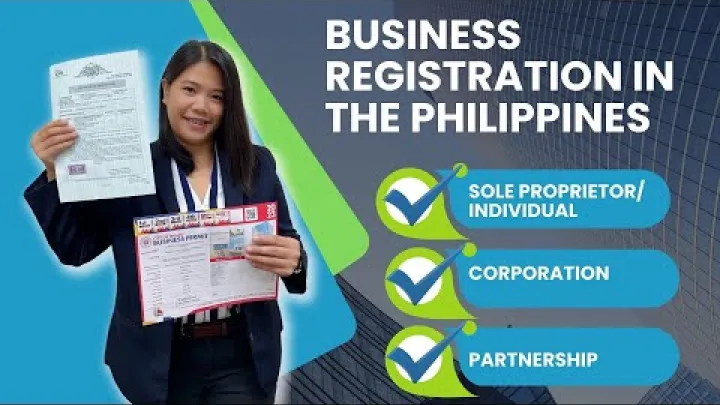How to Start a Business in the Philippines: A Step-by-Step Guide
Understanding the Philippine Business Environment
The Philippine business environment is regarded as a vibrant and dynamic landscape. With its strategic location in Southeast Asia and a burgeoning economy, the country presents a unique opportunity for business growth. The government has initiated various reforms, prioritizing economic policies that enhance the ease of doing business. These include streamlining bureaucratic procedures and digitizing business registration, which encourage entrepreneurial ventures and foreign investments.
The population demographics, with a large young workforce, also contribute to this appealing business climate. This demographic stimulates both consumption and skilled labor availability, ideal for businesses looking to expand or innovate. Understanding the cultural diversity and economic potential of the Philippines is crucial for entrepreneurs and investors aiming to establish successful ventures.
Choosing Your Business Entity
Sole Proprietorship
A sole proprietorship is the simplest form of business structure in the Philippines. It is ideal for individual entrepreneurs who want full control over their business. The registration process is straightforward; it requires a business name registration with the Department of Trade and Industry (DTI). While easy to establish, this entity does not provide liability protection, meaning personal assets may be at risk if the business incurs debt or legal issues.
For those starting small businesses or home-based ventures, a sole proprietorship offers flexibility and minimal administrative paperwork. However, one should be mindful of the implications of unlimited personal liability and consider appropriate insurance or legal protections to mitigate risks.
Partnership
A partnership in the Philippines is formed by two or more individuals who agree to share profits and responsibilities in a business. It can be either a general partnership, where all partners have unlimited liability, or a limited partnership, where some partners have limited involvement and liability. This structure is beneficial for combining resources and expertise.
Registering a partnership requires filing with the Securities and Exchange Commission (SEC) and a minimum capital of PHP 3,000. Partners should draft a clear agreement outlining their roles, profit-sharing, and responsibilities to avoid potential conflicts. Partnerships work best for businesses that value collaborative management and shared risks.
Corporation
Corporations are separate legal entities from their owners, providing them with limited liability protection. This structure requires registration with the SEC, offering the advantage of perpetual succession and the ability to raise capital through the sale of shares. The minimum paid-up capital is generally PHP 5,000, but certain industries may have higher requirements.
The Revised Corporation Code of the Philippines allows for innovative structures like the One Person Corporation (OPC), which requires only one incorporator, and Close Corporations suitable for family businesses. Corporations provide a robust framework for businesses needing substantial equity financing and greater credibility in the market.
Branch Office Setup
Foreign companies can establish a branch office in the Philippines, providing an avenue to directly extend business operations into the region. This setup necessitates a minimum assigned capital of USD 200,000. However, this requirement is lowered to USD 100,000 if the company employs at least 50 Filipino workers or engages in advanced technology.
This entity offers the benefit of streamlined operations and consolidated management with the parent company. A branch office setup is often advantageous for foreign businesses looking to explore the Philippine market without setting up a separate domestic entity.
Registration Process
DTI Registration for Sole Proprietorship
To start a sole proprietorship, the first step is registering your business name with the DTI. This process can be done online through the DTI Business Name Registration System. After obtaining the Business Name Certificate, the next steps include securing Barangay Clearance from the local barangay office, which verifies the business’s operation in its area.
Following this, you must obtain a Mayor’s Permit from the local government unit. The Bureau of Internal Revenue (BIR) registration is essential for acquiring a Tax Identification Number. If hiring employees, it's mandatory to register with the Social Security System (SSS), PhilHealth, and the Home Development Mutual Fund (Pag-IBIG). Engage local experts or consultants to expedite these requirements efficiently.
SEC Registration for Corporations
Forming a corporation requires submitting several documents to the SEC. Start by verifying and reserving your company name. Prepare the Articles of Incorporation, By-laws, and other required documents like Treasurer's Affidavit. Open a bank account for the corporation and deposit the initial paid-up capital to acquire a bank certificate.
File these incorporation documents with the SEC to obtain your Certificate of Incorporation. Subsequent steps include BIR registration and securing the necessary local permits, such as Barangay Clearance and Mayor's Permit. Once operational, enroll in SSS, PhilHealth, and Pag-IBIG, particularly if your corporation has employees. Be proactive in ensuring compliance to avoid penalties.
Required Permits and Licenses
Acquiring the right permits and licenses is a critical part of legitimizing your business in the Philippines. The requirements typically begin with a Barangay Clearance, which confirms the approval of the local barangay for your business operation. This is followed by obtaining a Mayor’s Permit, which signifies compliance with local government regulations.
Registration with the BIR is mandatory for securing a Certificate of Registration. This includes registration of Books of Accounts and authority to print official receipts and invoices. Other essential permits may include a Fire Safety Inspection Certificate from the Bureau of Fire Protection and various registrations with SSS, PhilHealth, and Pag-IBIG if you employ staff. Special permits are necessary for specific industries, such as food businesses needing a Sanitary Permit or Environmental Compliance Certificates for manufacturing operations.
Tax Compliance and Financial Requirements
The Philippine tax system requires adherence to several tax types and compliance measures. Key taxes include the Corporate Income Tax, set at a standard rate of 25% but reduced to 20% for small corporations with low income and asset bases. Companies must also manage Value-Added Tax (VAT), a consumption tax pegged at 12%, and Percentage Tax, a 3% alternative for non-VAT entities.
Organizations are obligated to comply with Withholding Taxes and local business taxes, which vary by city. Proper accounting practices involve maintaining Registered Books of Accounts and filing monthly, quarterly, and annual tax returns. Corporations are further required to prepare audited financial statements. Navigating these complex requirements often necessitates consulting with a certified accountant or tax professional to ensure complete and accurate compliance.
Foreign Ownership Rules and Limitations
Foreign entrepreneurs seeking opportunities in the Philippine market must understand the regulatory landscape regarding ownership. The Foreign Investment Negative List (FINL) outlines restricted areas of investment. Certain sectors, like mass media and small-scale retail, are fully restricted to foreign involvement, while public utilities and education allow up to 40% foreign ownership.
Foreign investments are usually subjected to a minimum capital requirement of USD 200,000, although reduced to USD 100,000 for firms that utilize advanced technology or have a substantial local workforce. Ventures in partially restricted industries must comply with the Anti-Dummy Law, which regulates nominal ownership arrangements. Special Investor's Resident Visas can facilitate entry for qualifying foreign investments, ensuring compliance with immigration policies.
Industry-Specific Opportunities in the Philippines
The Philippine economy is ripe with sector-specific opportunities poised for growth and innovation. The Information Technology and Business Process Management (IT-BPM) sector is one of the fastest-growing, driven by the availability of skilled young professionals. Manufacturing, logistics, and construction sectors are expanding in response to government infrastructure projects under ‘Build, Build, Build’ initiatives.
Agriculture remains a backbone of the economy, with food processing and export offering potential for significant returns. The tourism and hospitality sector is undergoing revitalization, capitalizing on the country’s scenic landscapes and cultural heritage. Renewable energy is emerging as a vital industry, encouraged by sustainable development policies. Entrepreneurs will find extensive support from agencies like the Department of Trade and Industry, which provides guidance on tapping into these lucrative sectors.
Frequently Asked Questions
How long does it take to register a business in the Philippines?
The entire registration process can range from one to three months, depending on efficiency and completeness in securing all necessary documents.
Can foreigners fully own a business in the Philippines?
Full foreign ownership is permitted in several sectors, especially export businesses. However, some industries have foreign equity restrictions as outlined by the Foreign Investment Negative List.
What are the common taxes businesses need to prepare for?
Businesses must account for Corporate Income Tax, VAT or Percentage Tax, Withholding Taxes, and local business taxes, conforming to rules outlined by the BIR.
Do I need a special permit to sell food in the Philippines?
Yes, food businesses require a Sanitary Permit and other health and safety approvals. Additional licenses may depend on the nature and scale of operations.
Are there incentives for starting a business in the Philippines?
The government offers various incentives such as tax holidays, duty exemptions, and enhanced deductions, particularly for industries aligned with national development goals.
Conclusion and Next Steps
Embarking on a business venture in the Philippines provides numerous opportunities, thanks to a supportive economic and regulatory environment. Understanding key procedural requirements, such as selecting the appropriate business structure and complying with registration processes, is crucial for success. Leverage government initiatives and sector-specific opportunities to position your business advantageously.
To ensure a smooth journey, consider consulting with legal and financial experts to navigate complex regulations, particularly for foreign investors and intricate business models. With thoughtful planning and adherence to mandated steps, you can successfully establish a thriving enterprise in the Philippines. Stay informed by visiting official government websites to keep abreast of any regulatory changes and emerging business opportunities.
Your Nearby Location
Your Favorite
Post content
All posting is Free of charge and registration is Not required.







